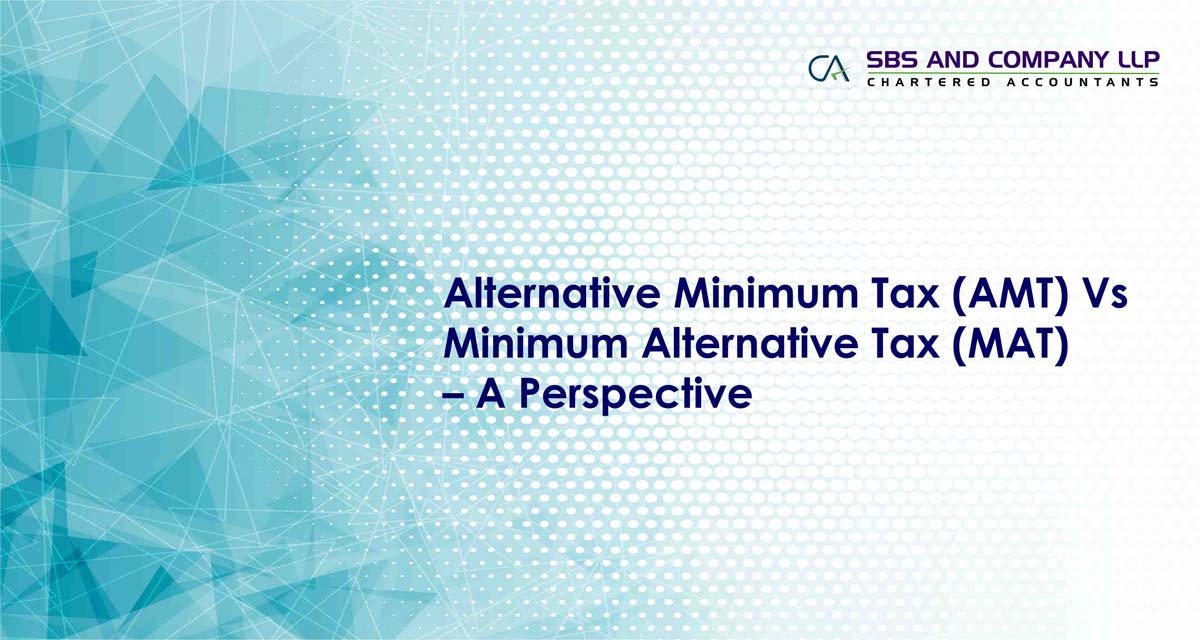Alternative Minimum Tax (Sec 115JC to 115JF): Finance Act 2011 has introduced payment of Alternative Minimum Tax (AMT) on Limited Liability Partnership. Finance Act, 2012 has extended the scope of AMT by making applicable it to all persons except companies. It is applicable if any person is claiming deduction U/S 10AA, 80IA to 80RRB except 80P and is payable on ‘Adjusted Total Income’ of the previous year.
It is applicable where the regular income tax payable for a previous year by a person (other than companies) is less than alternative minimum tax@ 18.5% payable for such previous year, the adjusted total income shall deemed to be the total income of the such person and be liable to pay tax @ 18.5% on ‘Adjusted Total Income’ and increased by surcharge, if any, and education cess. In this regard, in this article, we wish to distinguish the concepts of AMT and MAT as under:
Difference between AMT and MAT:
| S.No. | AMT | MAT |
| 1 | It is applicable to all persons other than companies | Applicable to Companies |
| 2 | It is calculated on ‘Adjusted Total Income’ | It is calculated on ‘Book Profits’ |
| 3 | 'Adjusted total income' means the total income as increased by deductions claimed, if any, under Chapter VI-A (C)- Section 80IA to 80 RRB except 80P or section 10AA | 'Book profit' means the profit & loss account of the assessee, being a company, prepared in accordance with Schedule VI of the Companies Act, 1956/ relevant statue1 as adjusted by certain items specified in the Explanation to section 115JB |
| 4 | For Computing ‘ Adjusted total income’ assessee has to follow the provisions of Income Tax Act, 1961 | For Computing ‘ Book Profits’, Net profit as per Profit and Loss Account, prepared as per Schedule VI/relevant statue1 , has to be considered. |
| 5 | Depreciation as per provisions of Income tax Act, 1961 has to be considered while calculating ‘ Adjusted total Income’ | Depreciation as per books of accounts, excluding depreciation on revaluation, has to be considered while calculating ‘Book Profits’ |
| 6 | No such adjustment required. | Transfer to profit and loss account from Revaluation Reserve equal to additional depreciation should be reduced while computing ‘Book Profits’. |
| 7 | AMT is not levied on Capital Gain exempt U/S 10(38) | MAT is levied on Capital Gain exempt U/S 10(38) |
| 8 | Capital Gain exempted U/S 54EC has to be excluded while computing ‘ Adjusted Total Income’ | Capital Profit credited to Profit and Loss account as per Schedule VI should not be excluded while computing ‘Book Profit’ even though exemption U/S 54EC are allowable. |
| 9 | For Calculation of ‘Adjusted Total Income’, the amount of brought forward losses and unabsorbed depreciation shall be set off as per normal provisions of the Income Tax Act, 1961. | For Calculation of ‘Book Profit’, the amount of brought forward loss or unabsorbed depreciation, whichever is less as per books of account shall be set off. |
| 10 | Conversion of LLP into any other form of business will not impact on AMT credit. | Conversion of Company in to LLP will result lapse of MAT credit. |
| 11 | AMT is not applicable in case of Individual, HUF, AOP, BOI and AJP if the ‘ Adjusted Total Income’ does not exceed ` 20,00,000/- | No such exception was provided |
Amendment by Finance Act (No.2) 2014: Persons claiming deduction U/S 35AD is subject to Alternative Minimum Tax (AMT). For computing adjusted total income by providing that the deduction claimed under section 35AD,as reduced by depreciation under Section 32 (without considering 35AD deduction) be added to the adjusted total income, further to the additions made under existing provisions mentioned above.
An assessee who has paid AMT in any earlier previous years to claim the credit of the same in any subsequent year, in accordance with the provisions of section 115JD notwithstanding the conditions in section 115JEE(1) or (2).
This article is contributed by Partners of SBS and Company LLP – Chartered Accountant Company You can be reached at This email address is being protected from spambots. You need JavaScript enabled to view it.



